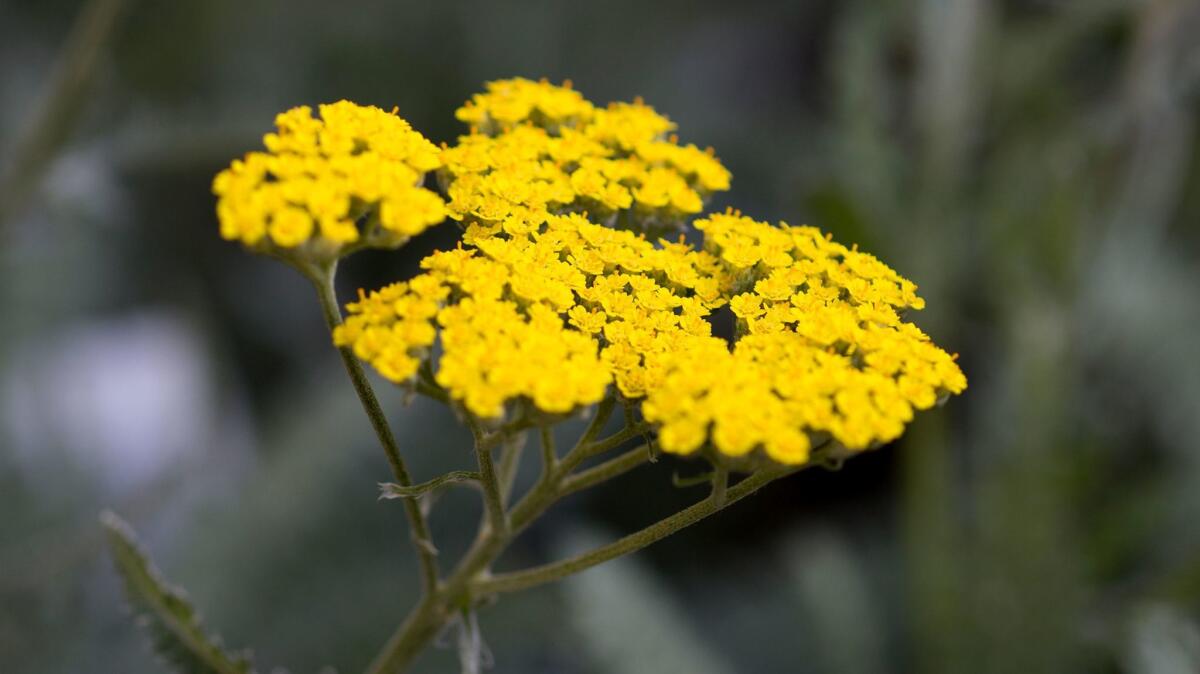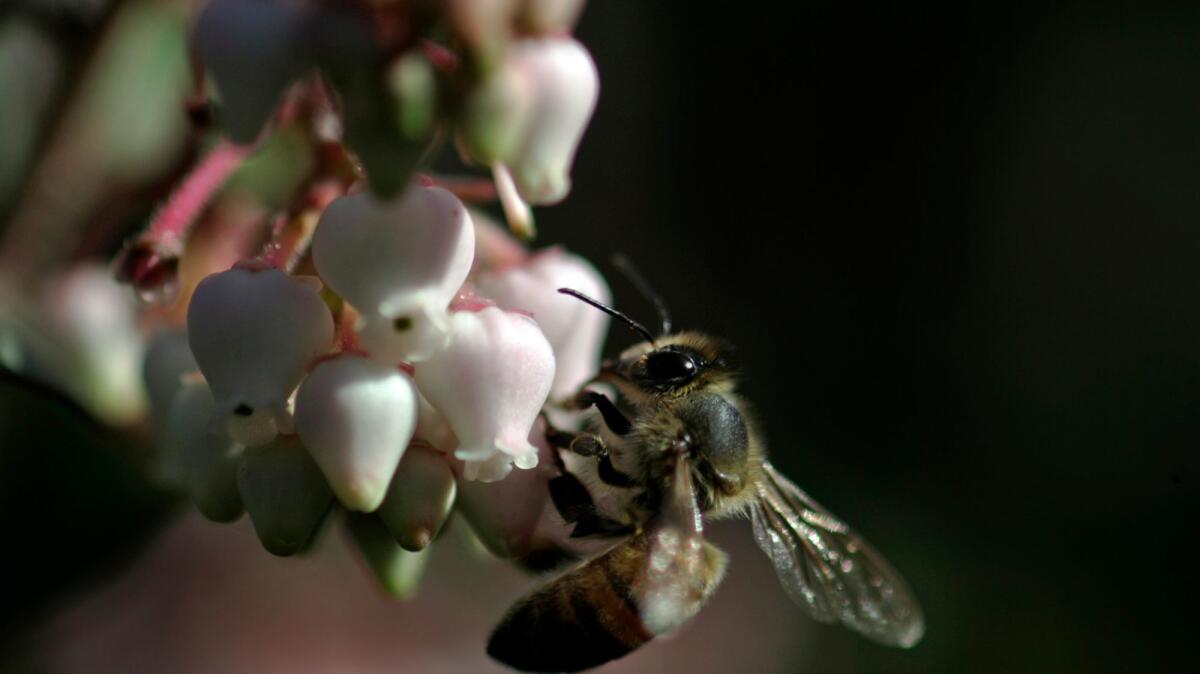‘Water-wise’ versus ‘drought-tolerant’: What does all the terminology really mean?
Ever notice the cacophony of terms Southern Californians use to describe sustainable gardens?
What is “drought-tolerant,” “drought-resistant,” “drought-adapted,” “xeric,” “water-wise,” “native,” “Mediterranean,” “dry summer,” “sustainable,” “environmentally friendly” and more?
Confusion multiplies when landscape professionals and retailers use terms inconsistently, even disagreeing on what they mean. As a non-professional, get it wrong and it means wasted time and expense.
Here’s a guide to terms and the plants that can help you:
Terms to know
Mostly interchangeable, these terms mean much the same thing. Such plants survive in average or less-than-average rainfall in your region, yet what is drought-tolerant in Oregon or Ohio won’t necessarily be in Southern California. So for Southern California gardens, you need to look for those plants that are drought-adapted to Southern California.
This means a plant that tolerates our six-month summer dry season once established, says Carol Bornstein, director of the Nature Gardens at the Natural History Museum of Los Angeles County: “[It’s] evolved in sync with [our] climate’s characteristic pattern of cool, wet winters and warm, dry summers.”
She says things get a bit complicated when we have a winter drought, winter being when we typically get the vast majority of our annual rainfall; in Los Angeles we are always in a summer drought, she notes.
Examples of Southern California drought-tolerant plants: Yarrow, Indian mallow and artemisia.

Native:
Native plants occur naturally in an environment and were not put there by us; they benefit and support their eco-systems and locale.
“Natives have co-evolved with local above- and below-ground organisms, animals, insects, birds, amphibians and soil-dwelling microorganisms for millennia, not just a few hundred years,” said Jodie Cook of Jodie Cook Landscape Design.
Planting a “California native” garden is a current buzz concept. Yet not all California native plants are drought-tolerant. If water-savings are key, check to make sure if it survives well on low water.
And don’t confuse California natives with naturalized plants brought here by humans and happy in their new space, such as the California pepper tree, originally from South America. Generally, these “native” plants are not an issue, though a small subset are considered invasive, (pampas grass, vinca and Mexican feather grass are examples) quickly taking over their new environment and poorly affecting eco-systems. Take care to not plant these, experts say.
Examples of California native plants: California fuschia, matija poppy, manzanita.

Mediterranean:
In terms of plants, Mediterranean refers to five similar climate regions: California, the Mediterranean basin, South Africa’s cape region, central Chile’s western coast and Australia’s southwest and southern regions.
Plants from these Mediterranean climates survive longer periods of moisture stress and on less frequent moisture, says Bob Perry of Perry and Associates Collaborative.
“Such plants have evolved with thicker foliage, leaf hairs, light colors, and have oils that combine to lock in moisture and resist drying out,” he explained.
Adding to the soup of terms is a relatively new one: “summer-dry.” Some landscape aficionados hope to replace the term “Mediterranean” with the more broad and accurate “summer-dry,” which would include a naming of all of the five regions, not just the European.
Examples of Mediterranean plants: Alstroemeria, lavender, senecio.

Established vs. non-established:
A simple enough concept that most nonprofessional gardeners often overlook, to great detriment. An established plant has grown its root system from its former fussed-over nursery pot life into your yard’s soil. New plants must get acclimated and grow a new root system to survive without additional supplemental water.
What people often do through confusion, explains Cook, is purchase a “drought-tolerant” plant, plant it in dry soil and think it will survive because it is “drought-tolerant.”
“Provide a gradual transition to maturity once they’re in the ground,” she urged. “Roots should stay moist and not be allowed to dry out for two to three months. It’s best to plant low water needy plants in seasons other than summer; October being best, as rains do much of the watering for you.”
Sustainable, California-friendly:
These are buzz-word concepts to promote plants and techniques that support the environment’s welfare. Yet a sustainable yard in Southern California does not necessarily mean planting only California native plants.
It also promotes no pesticide use, natural soil regeneration via composting and mulching, and capturing and using water at its most efficient.
An even newer concept to replace them is the “Watershed” approach, according to Pamela Berstler of G3, Green Gardens Group. This approach has four basic standards: building healthy living soil, capturing rainwater on site, selecting climate-appropriate plants and using irrigation efficiently and only when necessary, she explains.
“The principles that have been used to manage large-scale watersheds are now being applied to the very smallest scale: a roof, a front/backyard, a neighborhood, etc. [It] allows you to use water-wise, drought-tolerant, climate-appropriate techniques, and defines the actions in a way everyone can understand.”
Microclimate and hydro-zoning:
Sometimes confused, these are similar terms though not the same. Microclimate is a smaller area within a larger, general climate zone that has its own unique climate. A city can have a microclimate from a large regional area, a yard from the larger city and an area inside your yard from its plant neighbors.
“Understanding microclimates is a key to the success of most gardens,” Perry said. “What is the sun and heat exposure, and how will it affect the plant’s need for water in order to stay hydrated and cool?”
Hydro-zoning is an irrigation term. It’s a technique that groups plants together based on needs, mostly regarding water. Planting low-water plants with those that require more water is wasteful and causes stress on one of the plants; plant them in harmony with like-water needs.
Example of properly hydro-zoned plants: Buckwheat, salvia Clevelandii, wooly blue curls.
And finally ...
If all this sounds complex, that’s because it is. Some 8,000 plants are climate-appropriate in Southern California, according to Berstler.“We’ve used and heard the word ‘drought’ for years, but now it can’t be ignored,” says Johanna Woollcott, of Wild Gardens LA. “Now we have to think of it in all caps: DROUGHT. It’s truly a thrilling time to be in the industry as everything about how we approach gardening is different. It’s a more complicated approach to landscapes than in the gardens of our childhood. If you want to be successful you need to educate yourself, or hire someone with knowledge to do it for you.”
Mike Evans of Tree of Life Nursery thoroughly explains watering schedules for Southern California drought tolerant new plants
ALSO
Photos: Ready to scratch the grass? Here are 27 inspiring lawn-free yards
No green thumb needed: 6 drought-tolerant herbs that are almost impossible to kill